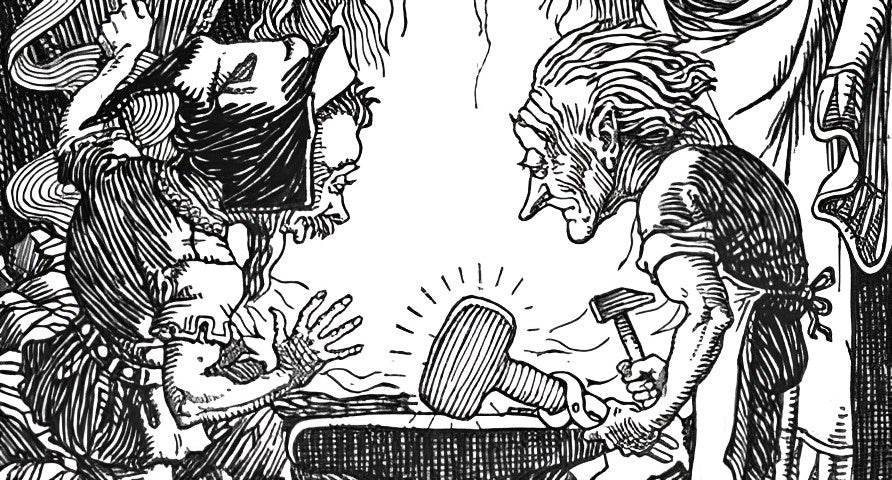
The Dwarves (and Elves) of Norse Mythology: Makers of Magical Gifts
Posted by Sons Of Vikings on
Thanks for visiting our blog! As a thank-you, enjoy 15% off your first order in our online Viking Shop with the discount code BLOG15.Norse mythology, rich with tales of gods, giants, and mystical creatures, is also home to the master artisans of the cosmos: the dwarves and elves. These beings, particularly the dwarves, are credited with forging some of the most powerful and magical items in the mythological world, including weapons, treasures, and even the tools of the gods themselves. These stories not only highlight the extraordinary craftsmanship of these mythical beings but also offer insights into the Norse understanding of magic, creation, and the balance of power. The Dwarves: Master Craftsmen of the Gods In Norse mythology, dwarves are often...
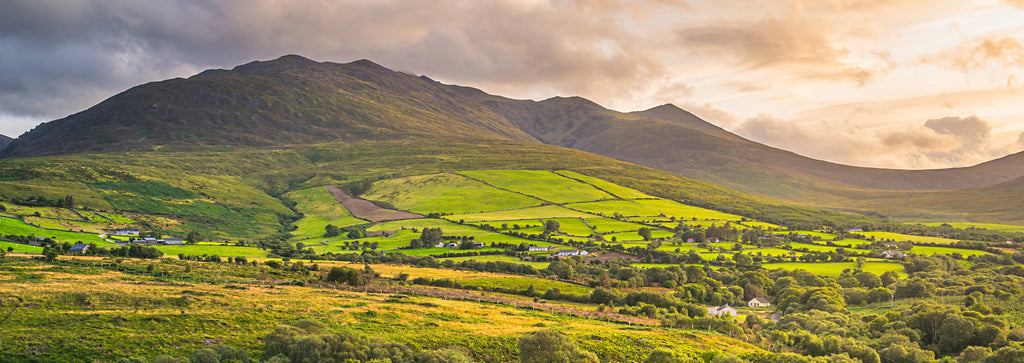
Viking Destinations in Ireland
Posted by Sons Of Vikings on
Thanks for visiting our blog! As a thank-you, enjoy 15% off your first order in our online Viking and Celtic Shop with the discount code BLOG15.Ireland, with its lush landscapes and ancient lore, is also steeped in Viking history. The Norsemen left an indelible mark on the Emerald Isle, particularly between the 8th and 11th centuries. For those intrigued by Viking history, Ireland offers a treasure trove of museums and historic sites where the echoes of these seafaring warriors can still be felt. Here’s a guide to the most recommended Viking-related destinations in Ireland. 1. Dublin: A Viking Stronghold Dublin, originally known as Dubh Linn (meaning "Black Pool"), was founded by the Vikings in the 9th century and quickly became one...
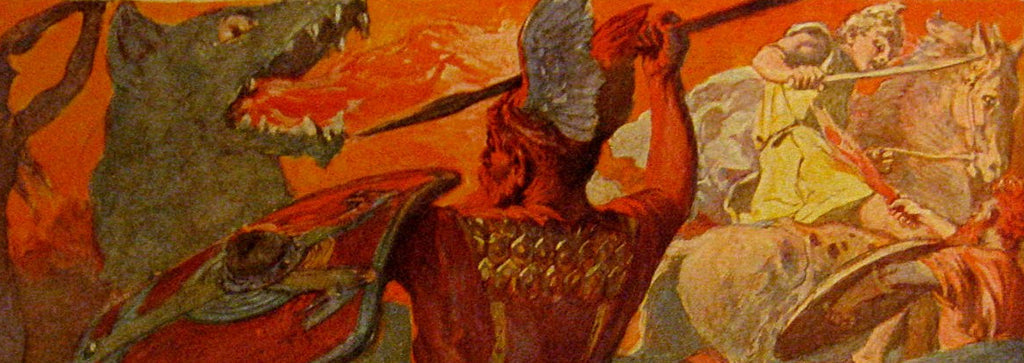
Who Kills Whom During Ragnarök:
Posted by Sons Of Vikings on
Ragnarök is a tragic and bloody end to the Norse pantheon, with the deaths of many central figures, including Odin, Thor, and Loki. Below is a detailed list of who kills whom during this cataclysmic event, based solely on information from Icelandic sources.
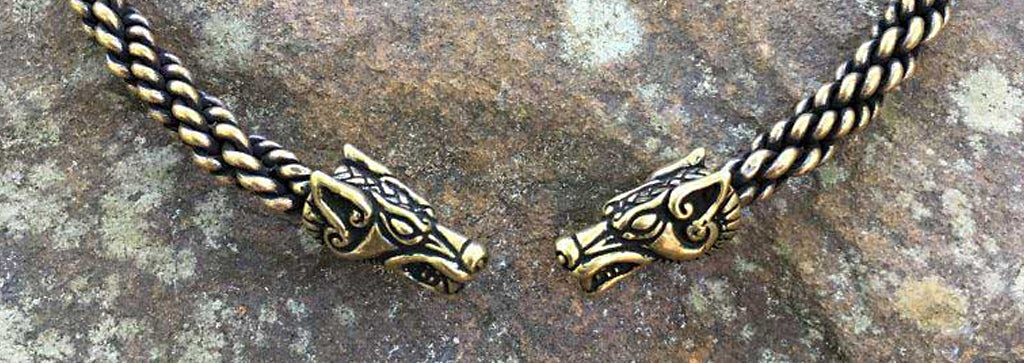
Vikings and Torcs
Posted by Sons Of Vikings on
Thanks for visiting our blog! As a thank-you, enjoy 15% off your first order in our online Viking Shop with the discount code BLOG15. The torc, a type of 'neck ring' jewelry, is typically associated with ancient Celtic culture, however historical references indicate that it was also a popular form of jewelry worn by Viking warriors, Viking women and Viking nobility. Here’s a look at the evidence supporting the use of torcs among the Vikings: 1. Archaeological Findings Archaeological evidence is one of the primary sources indicating the Vikings' use of torcs. Several burial sites across Scandinavia have revealed torcs made from various materials, including gold, silver, and bronze. Birka, Sweden: The Birka graves, dating from the 8th to 10th centuries,...
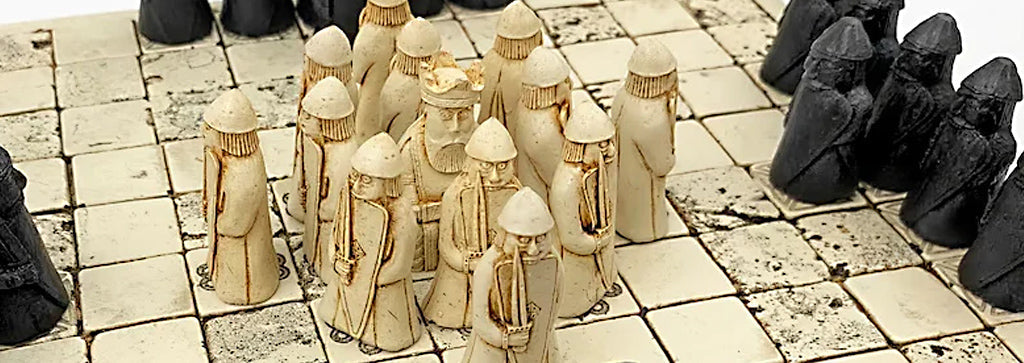
Viking Board Game: Hnefatafl
Posted by Kurt Evald Noer on
Thanks for visiting our blog! As a thank-you, enjoy 15% off your first order in our online Viking Shop with the discount code BLOG15. The Ancient Game of Hnefatafl Hnefatafl, often referred to as "King's Table," is a fascinating board game that was widely played by the Vikings and other Northern European cultures from as early as the 4th century AD until the arrival of chess in the region. This strategic game, which simulates a king's escape from attackers, offers a unique glimpse into the social and cultural life of the early medieval Scandinavians.Hnefatafl playing pieces of various shapes have been found in numerous Viking grave sites, made out of everything from wood, to bone, to glass. How to Pronounce Hnefatafl...
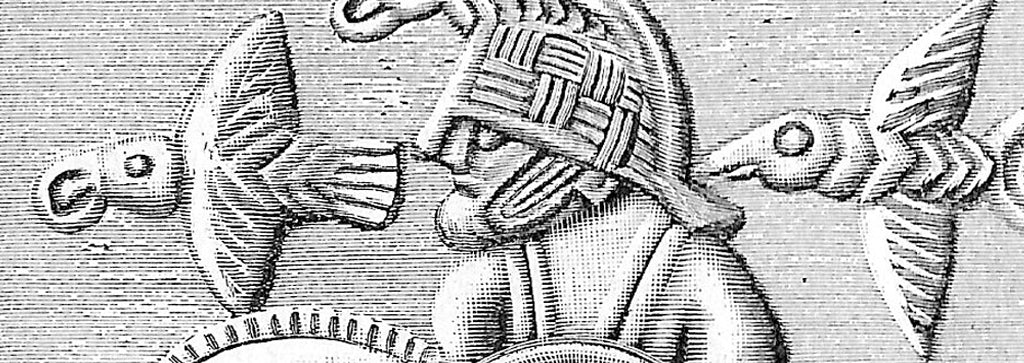
Huginn and Muninn: The Mythical Ravens of Odin
Posted by Sons Of Vikings on
Thanks for visiting our blog! As a thank-you, enjoy 15% off your first order in our online Viking Shop with the discount code BLOG15. In Norse mythology, Odin, the one-eyed god known as many different names including the Allfather, stands out as one of the most complex and intriguing deities. Among his many attributes, his association with two ravens, Huginn and Muninn, is particularly fascinating. These ravens, whose names mean "thought" and "memory" respectively, are more than mere companions to Odin; they are extensions of his mind, eyes, and ears across the realms. They would spy for him and magically speak back to him what they saw. To delve into their significance, we turn to the primary historical sources that illuminate...
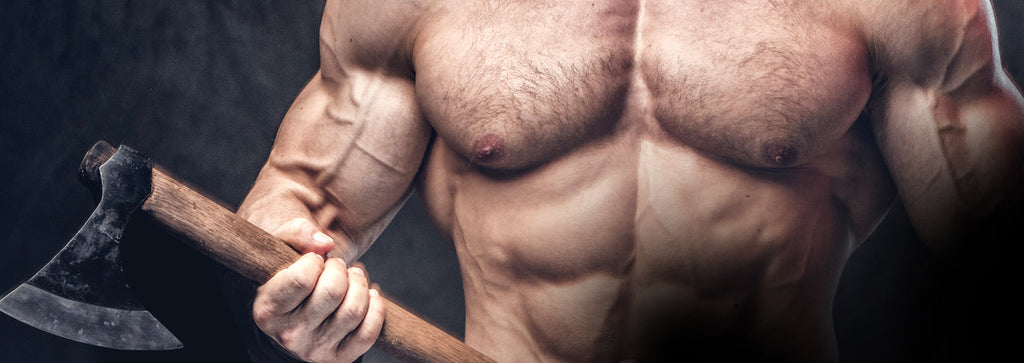
How Physically Tough Were Vikings?
Posted by Sons Of Vikings on
Thanks for visiting our blog! As a thank-you, enjoy 15% off your first order in our online Viking Shop with the discount code BLOG15.Vikings were a dominant disruptive force in the military, economic, and political world of the Early Middle Ages. One reason for this was the technological advantage of their dragon ships, which made them more mobile than any of their enemies. Other reasons included their highly developed warrior ethos, fearlessness, and a keen eye for opportunity. But all these things could not have granted them such tremendous success had it not been for the physical prowess it took to win the battles, brave the waves, and carry their treasures home. Informed people already realize the fantasy depiction of Vikings...

Ravens, Vikings, and Norse Mythology
Posted by Sons Of Vikings on
Thanks for visiting our blog! As a thank-you, enjoy 15% off your first order in our online Viking Shop with the discount code BLOG15. Huginn and Muninn The most famous ravens would be Odin's two ravens, Huginn (thought) and Muninn (memory). These two ravens are central figures in Norse mythology, embodying his intellectual and spiritual attributes. These ravens are his eyes and ears, flying across the world to gather information and return to whisper all they have seen and heard into his ear. This ability makes Odin the most well-informed of the gods.One of the primary sources detailing Odin's relationship with his ravens is the Prose Edda, written by Snorri Sturluson in the 13th century. In the Prose Edda, there’s a...

Where Did the Vikings Raid?
Posted by Sons Of Vikings on
Thanks for visiting our blog! As a thank-you, enjoy 15% off your first order in our online Viking Shop with the discount code BLOG15.The Vikings, famed for their daring raids and seafaring exploits, left a lasting impact on the history and culture of medieval Europe. But where exactly did these Norse warriors launch their raids, and what were the consequences of their actions? In this blog post, we’ll delve into the geographical scope of Viking raids, tracing their footsteps across Europe and beyond. England: One of the primary targets of Viking raids, England suffered repeated incursions by Norse warriors from the late 8th century onwards. Places such as Lindisfarne in Northumbria (793 AD) and Jarrow (794 AD) were among the...

Samhain, the original Halloween and Álfablót (the Norse version)
Posted by Sons Of Vikings on
Thanks for visiting our blog! As a thank-you, enjoy 15% off your first order in our online Viking Shop with the discount code BLOG15. As many of you know, Halloween was originally known as 'All Hallows' Eve', which falls on October 31, marking the day before All Saints' Day on November 1. Many believe this was yet another holiday purposely created by the Christian church to replace a popular pagan holiday known as the (Celtic) holy night of Samhain (pronounced ‘SAH-win’). To many, Halloween is actually about Samhain, and to the pagan Celts of that time, Samhain marked the transition between winter and summer, and it was believed that on that night, the barrier between the natural and spirit worlds was razor-thin...
